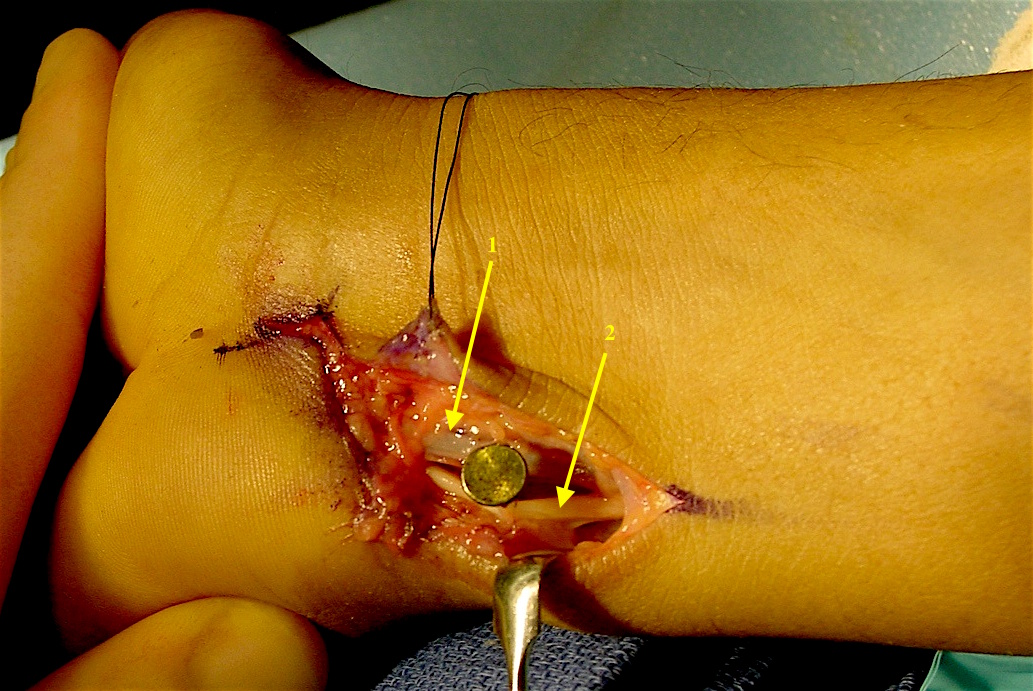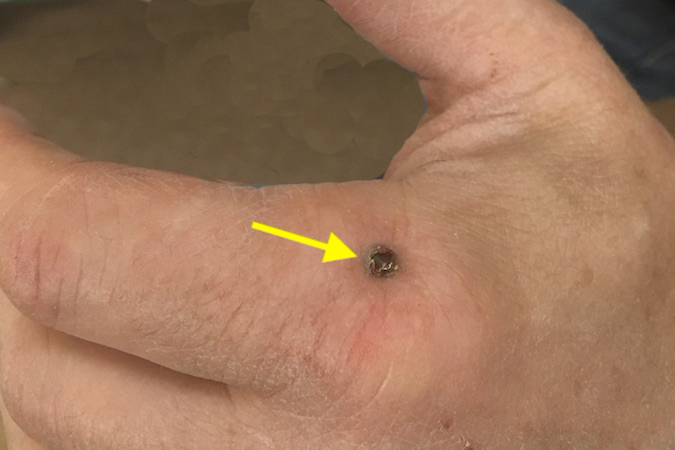Operative Treatment of Nail Gun Injury involving Ulnar Artery and Nerve
-

Nail Gun Injury right palmar wrist DRUJ. Note (1) ulnar artery; (2) Ulnar nerve and imagine damage that barbs could cause if nail pulled out too aggressively.
-

Nail Gun Injury to base of left index finger. Sterile bolt cutter used to remove end of the nail (arrow) be surgical open extraction.
